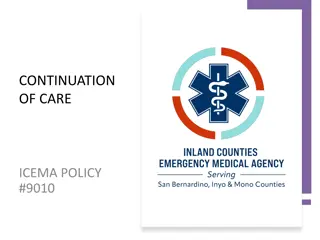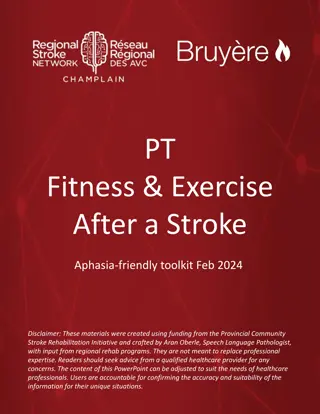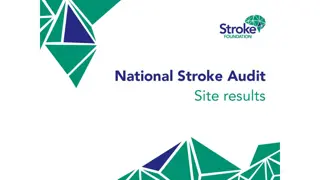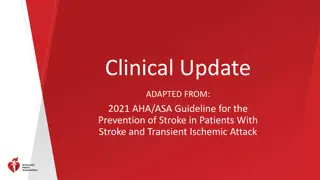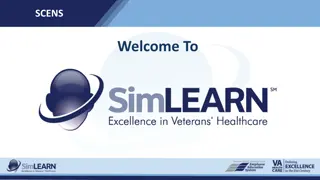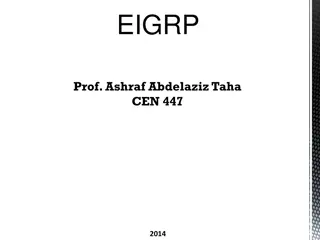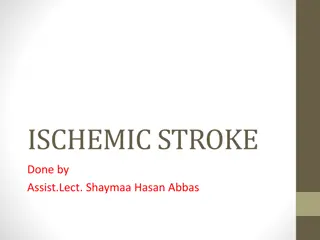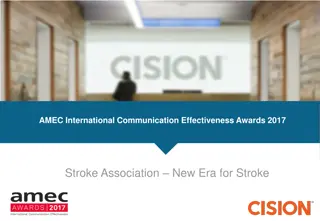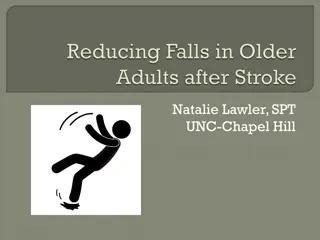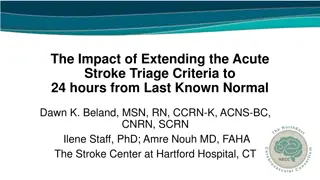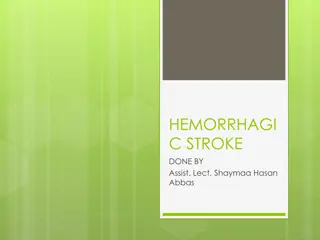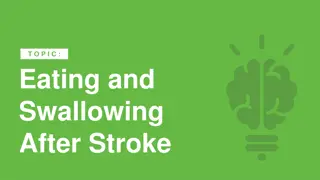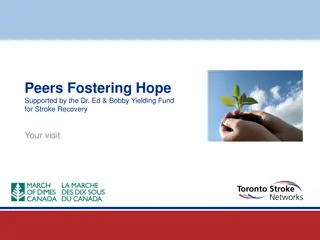Comprehensive Stroke Care Protocol and Time Goals Overview
This presentation details the SCENS protocol for stroke care, including learning objectives, major types of strokes, risk factors, 8 Ds of stroke care, and important time goals to achieve optimal patient outcomes.
Download Presentation

Please find below an Image/Link to download the presentation.
The content on the website is provided AS IS for your information and personal use only. It may not be sold, licensed, or shared on other websites without obtaining consent from the author. Download presentation by click this link. If you encounter any issues during the download, it is possible that the publisher has removed the file from their server.
E N D
Presentation Transcript
SCENS Welcome To
Learning Objectives SCENS 1. Complete a focused assessment on the patient presenting with signs and symptoms of a stroke Implement facility specific protocol to manage the care of the patient presenting with signs and symptoms of a stroke Initiate facility specific protocol for the patient presenting with a hemorrhagic stroke Communicate effectively when managing the care of the patient experiencing a stroke 2. 3. 4.
Why? SCENS VHA Quality Enhancement Research Initiative (QUERI) Statistics The Joint Commission: 2016 National Patient Safety Goals VHA Directive 2011.038: Treatment of Acute Ischemic Stroke (AIS) Statistics Standardization of VHA stroke treatment and care American Heart Association (AHA) -American Stroke Association (ASA) National Institute of Neurologic Disorders and Stroke (NINDS)
Major Types of Strokes SCENS Ischemic 87% Hemorrhagic 13%
Risk Factors SCENS Conditions Behaviors Previous stroke or transient ischemic attack (TIA) Unhealthy diet Hypertension Physical inactivity Hyperlipidemia Obesity Cardiac disease Tobacco abuse Atrial fibrillation (A fib) Alcohol abuse Diabetes Sickle Cell disease Other Risk Factors Age, gender, heredity, race or prior stroke
8 Ds of stroke care SCENS 1. Detection 2. Dispatch 3. Delivery 4. Door 5. Data 6. Decision 7. Drug/Device 8. Disposition 7
Important Time Goals SCENS Notify the emergency response immediately FAST assessment/**Cincinnati Pre-Hospital Stroke Scale (ACLS Suspected Stroke Algorithm) Establish last normal Immediate general assessment and stabilization within 10 minutes Neurologic assessment within 25 minutes Interpret CT Scan or MRI within 45 minutes Determine treatment pathway within 60 minutes Hemorrhagic or Ischemic Stroke?
FAST Assessment SCENS
Within 10 Minutes SCENS Immediate General Assessment ABCs Oxygen Vital signs Intravenous access and blood samples Blood glucose Neurologic assessment Activate the stroke team Order CT Scan/MRI per policy Obtain 12 Lead ECG Other Head of bed at 30o Head midline Suction NPO
Within 25 Minutes SCENS Neurologic assessment National Institutes of Health (NIH) Stroke Scale Canadian Stroke Scale By a stroke team member Help determine the appropriate treatment Also used to monitor worsening or improvement and as predictors of outcome
Within 45 Minutes SCENS Stroke is confirmed but hemorrhage confirmed The patient is not a candidate for fibrinolytics Administer aspirin orally if the patient is able to swallow
Within 60 minutes SCENS Hemorrhagic Stroke pathway Consider transfer for appropriate care Consult a neurologist Admit the patient to the stroke unit or intensive care Possible transfer to operating room
Points to Consider SCENS Communication ISBAR Who to notify What number to dial Keep the patient and family informed Pertinent documentation Other options Anticipate transfer Current medications The patient s weight in kilograms
Potential Issues SCENS Surgery Transport to a stroke center Multidisciplinary resources Complications Psychosocial Co-existing conditions
Summary SCENS 1. Completed a focused assessment on the patient presenting with signs and symptoms of a stroke per facility protocol Discussed facility specific protocol to manage the care of the patient presenting with signs and symptoms of a stroke Initiate facility specific protocol for the patient presenting with a hemorrhagic stroke Reviewed effective communication when managing the care of the patient experiencing a stroke 2. 3. 4.
Stroke: Ischemic SCENS Gina Ubaldini Sixty five (65) year-old female presented requesting a refill on her blood pressure medication. Past Medical History: Twelve (12) year one pack per day history of smoking, hypertension, and non-compliance. Past Surgical History: Unremarkable Medications: Metoprolol 50 mg two times a day (last dose three months ago because it makes the patient feel tired ) Aspirin 81 mg one time a day Allergies: NKDA







